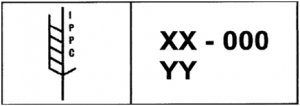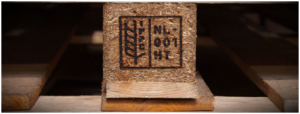Fumigation of wood is an immensely important part of the international shipping industry. Fumigation is aimed at eradicating pests and insects in wood that can spread in the form of spores and seeds while being transported between countries.
Fumigation of wood is an immensely important part of the international shipping industry. Fumigation is aimed at eradicating pests and insects in wood that can spread in the form of spores and seeds while being transported between countries.
Fumigation is used only for untreated wood packaging such as pallets, boxes, dunnage wood, box pallets, wooden cable reels, racks and frames. Any packaging using wood products such as particle boards, plywood or veneer plates that have been treated with high temperatures or pressure during production are not subject to fumigation requirements because living organisms are very unlikely to survive under such conditions. Additionally, the packaging in the form of wood chips, wooden wool and untreated wood cut in thin pieces (max. of 6 mm in width) are not subject to fumigation unless fumigation is justifiable.
Measures that limit the spread of pests are:
- Heat treatment – HT;
- Kiln drying – KD;
- Chemical pressure impregnation – CPI;
- Fumigation with methyl bromide – MB.
Wooden packaging subjected to the above-mentioned treatments is marked with a special logo. The logo should include:
- A symbol;
- A two-letter ISO country code, followed by a number provided by the National Plant Protection Organization to the manufacturer of the packaging;
- IPPC symbol (International Plant Protection Convention).

XX – ISO code
000 – A number assigned by the National Plant Protection Organization
YY is a type of an approved measure, for example HT

The lack of appropriate labelling that attests to fumigation may result in the cargo not being accepted for shipping. The country of import may also charge the sender with extra costs or refuse to admit the cargo into the country of destination and send it back at the importer’s expense.
Mind you, the fumigation requirement does not apply to shipping between EU states.